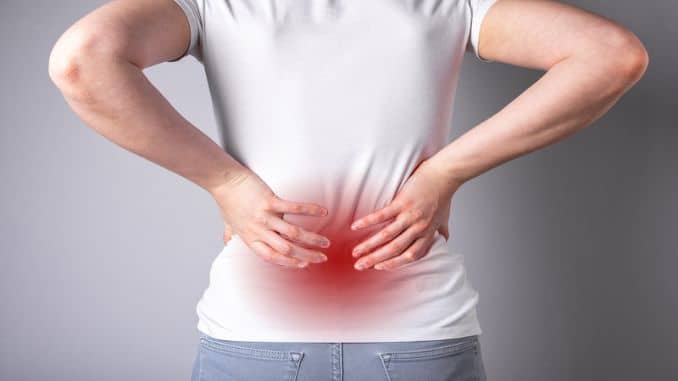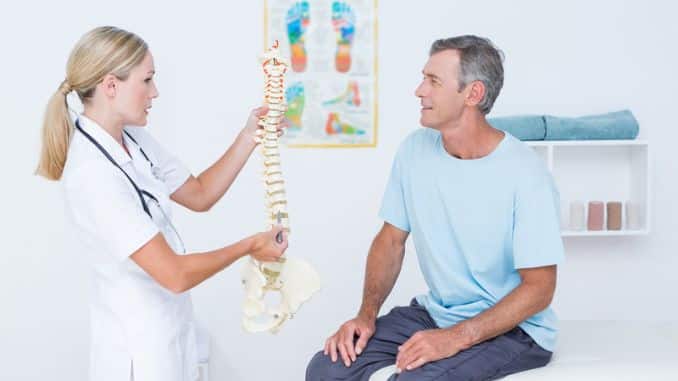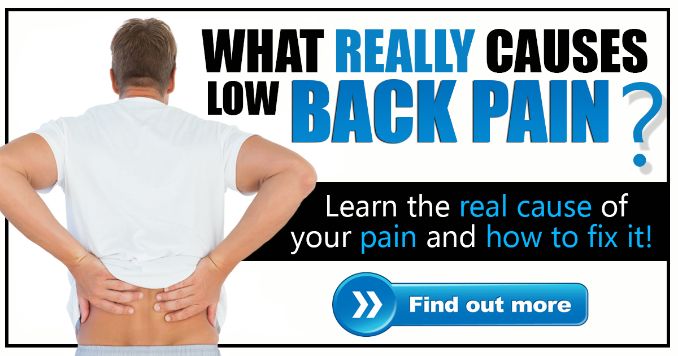
Throwing your back out can cause intense low-back pain and stiffness, especially if you come from a bad fall. It can even be an–the-floor-can’t-move debilitating experience. Typical symptoms include muscle spasms with bouts of muscle tightening and difficulty standing up straight. You want pain relief, and you want it now! Here are some low back pain dos and donts to keep in mind when dealing with lower back pain.
Many common causes of lower back pain, including underlying chronic conditions.
Muscle sprains or strains
The muscles and ligaments in the back can stretch or tear due to excess activity. Sudden movements can also cause sprains or strains.
Herniated disc
The discs in the back are prone to injury, and this risk increases with age.
The outside of the discs can tear or herniate.
A herniated disc is also known as a slipped or ruptured disc. It occurs when the cartilage surrounding a disc pushes against the spinal cord or nerve roots. The cushion that sits between the spinal vertebrae extends outside its usual position. This can compress the nerve root as it exits the spinal cord and vertebrae.
Possible causes include trauma and degenerative changes over time. Without treatment, pain from a herniated disc will typically last up to 6 weeks.
Sciatica
The sciatic nerve connects the spine to the legs. If a herniated disc presses on the sciatic nerve, sciatica can occur. Sciatica can cause leg or foot pain that usually feels like burning or pins and needles.
Spinal stenosis
Spinal stenosis causes the spaces in your spine to be narrow, putting pressure on the spinal cord and nerves.
It is commonly associated with the degeneration of the discs between the vertebrae. The result is nerve roots or spinal cord compression by bony spurs or soft tissues, such as discs.
Pressure on the spinal nerves causes symptoms such as:
- numbness
- weakness
- cramping
You might feel these symptoms anywhere in the body. Many people with spinal stenosis notice their symptoms worsen when they stand or walk.
Unusual spine curvatures
Conditions that cause unusual curvatures in the spine include:
- scoliosis
- lordosis
- kyphosis
These conditions are often present at birth and are usually first diagnosed during childhood or adolescence.
The unusual curvature can cause pain and poor posture because it places pressure on the:
- muscles
- tendons
- ligaments
- vertebrae
The good news is that your back pain will go away in most cases. Here are some low back pain dos and donts at-home tips to help you feel better.
Here are some dos and don’ts to keep in mind when it comes to low back pain:
DO’s
-
Stop what you are doing and apply ice to ease the pain and inflammation.
Cold therapy can be continued for about 20 minutes every 6-8 hours for 2-3 days. But remember – don’t put ice directly on your skin. It can damage the tissues and nerve endings. You may find it helpful to lie flat on your back on a hard surface for support rather than on a comfy bed. This can help relax the injured muscles in the immediate aftermath.
-
Pain relievers such as acetaminophen, ibuprofen (Advil), and naproxen (Aleve) can help.
However, they may not be advisable for anyone with kidney problems or a stomach ulcer. It’s a good idea to check which medications you should or should not take with your doctor.
-
Once upright and stabilized, do whatever you can to stay that way, so your injury does not worsen.
That means avoiding bending, lifting, or twisting through the spine. Keep your spine straight if you need to pick up something from the floor. When you brush your teeth or wash the dishes, maintain a straight, neutral spine, bending forward from your hips.
-
Sleep in a position that’s comfortable for your spine.
Put pillows under your knees when you are on your back or a pillow between your legs if you sleep on your side. This helps the muscles to release.
-
Try a moist heat if your pain persists after the third day.
This can help reduce stiffness and improve blood flow to the injured area.
-
Massaging the affected muscle with firm pressure may help reduce tension.
Press on the area for 30-60 seconds, then rub the surrounding area in a circular motion.
-
If tolerated, stay mobile in the first few days after your injury. Move gently.
Gentle movement is better than bed rest. Any lengthy bed rest can prolong your back pain.
-
When ready, engage in slow, easy stretching, such as pulling your knees toward the chest.
If it hurts doing any exercise, stop, slow down, and try again later. Walking for short intervals can also help.
DON’Ts
-
Do not try to “play through the pain.”
It is essential to let your body recover before resuming strenuous activity.
-
Do not sleep on your stomach.
This can worsen back pain.
-
Do not perform heavy lifting or repetitive back twisting for up to six weeks.
This can disrupt the healing process.
-
Do not ignore how you injured yourself.
Make changes to the way you lift. Practice good posture and use judgment when lifting heavy items (ask another person to help you). Strengthen your core with abdominal exercises, which can protect your back.
-
Stay in one position for a short period.
Move around and stretch every 20 minutes to help prevent injury. Consider lifestyle changes like losing weight to reduce your chances of recurring back issues.
Strengthening your low back is important for overall health and wellness. With these low back pain dos and donts tips, you can start a good habit of maintaining low-solid back muscles. With consistency and dedication, you can improve your low back strength and enjoy a healthier and more active lifestyle. A strong low back allows us to move freely, reducing our risk of injury and helping us perform everyday activities easily. Finally, ensure you get enough rest and stay hydrated, which will help your muscles recover and stay strong.
Getting plenty of rest is essential for your health and well-being. Your body has time to recharge and heal when you get enough rest. It’s essential for proper physical and mental functioning. Studies have found that people who get adequate sleep tend to have better focus, problem-solving skills, and overall performance. And because your body can heal itself more effectively when you’re well-rested, it also helps reduce the risk of sickness and injury.
Back pain can be prevented by following low back pain dos and donts. Back pain that won’t go away is an indicator of something serious. It is best to get the assistance of a medical professional because, in certain cases, you may even require surgery or other types of comprehensive treatment. Don’t risk exacerbating the situation; visit a doctor immediately.



